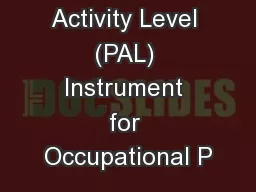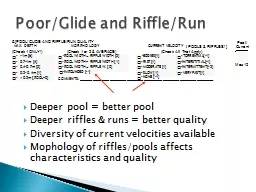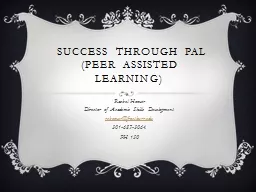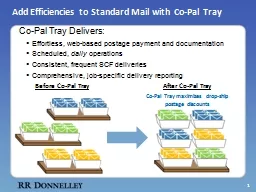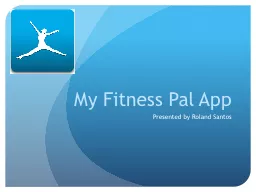PPT-The Pool Activity Level (PAL) Instrument for Occupational P
Author : danika-pritchard | Published Date : 2017-05-26
Anae Dixon Overview The purpose of the PAL Underpinning principles The PAL Tools The PAL Levels Purpose of study Participants Results and Findings Conclusion
Presentation Embed Code
Download Presentation
Download Presentation The PPT/PDF document "The Pool Activity Level (PAL) Instrument..." is the property of its rightful owner. Permission is granted to download and print the materials on this website for personal, non-commercial use only, and to display it on your personal computer provided you do not modify the materials and that you retain all copyright notices contained in the materials. By downloading content from our website, you accept the terms of this agreement.
The Pool Activity Level (PAL) Instrument for Occupational P: Transcript
Download Rules Of Document
"The Pool Activity Level (PAL) Instrument for Occupational P"The content belongs to its owner. You may download and print it for personal use, without modification, and keep all copyright notices. By downloading, you agree to these terms.
Related Documents

